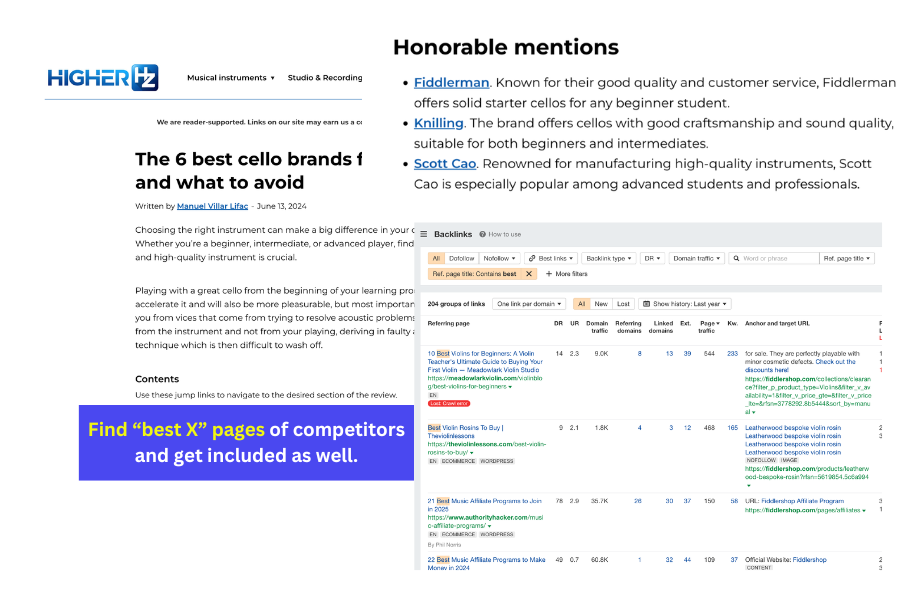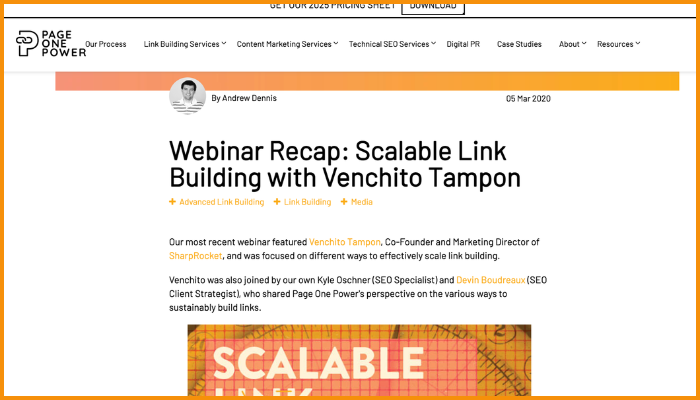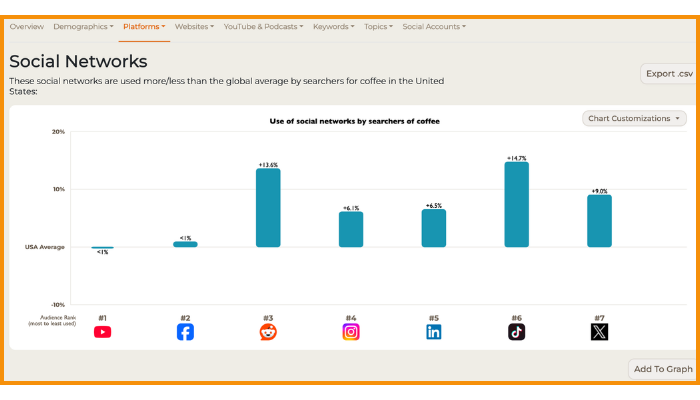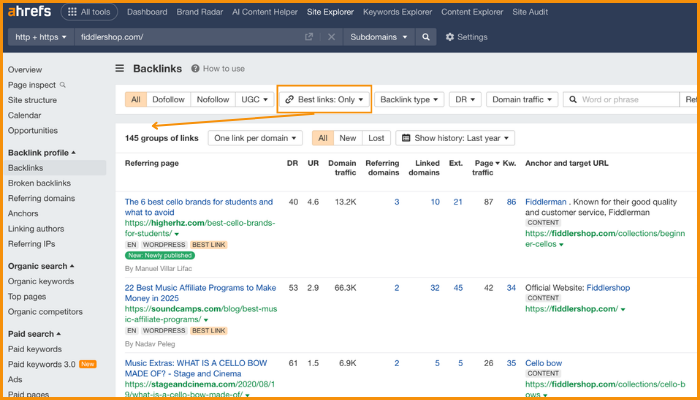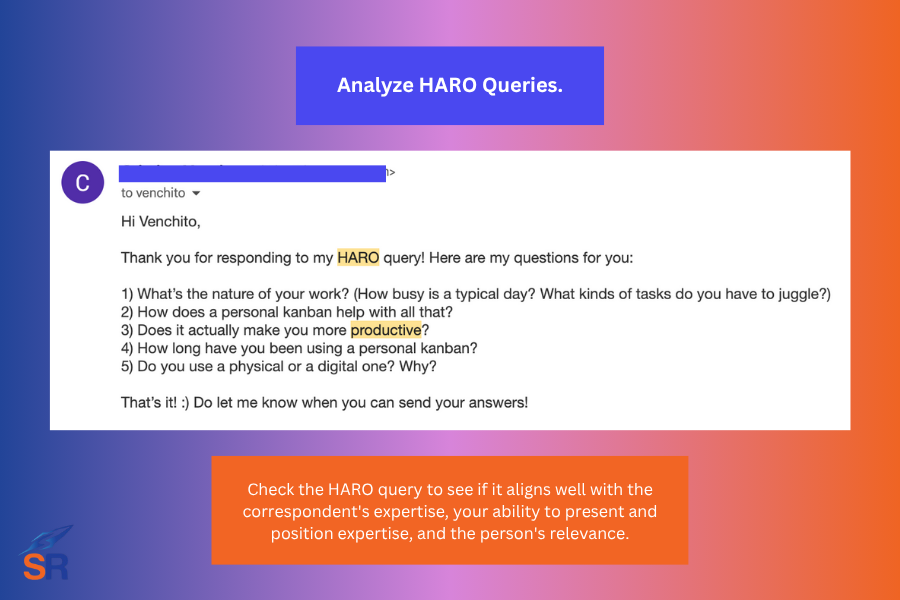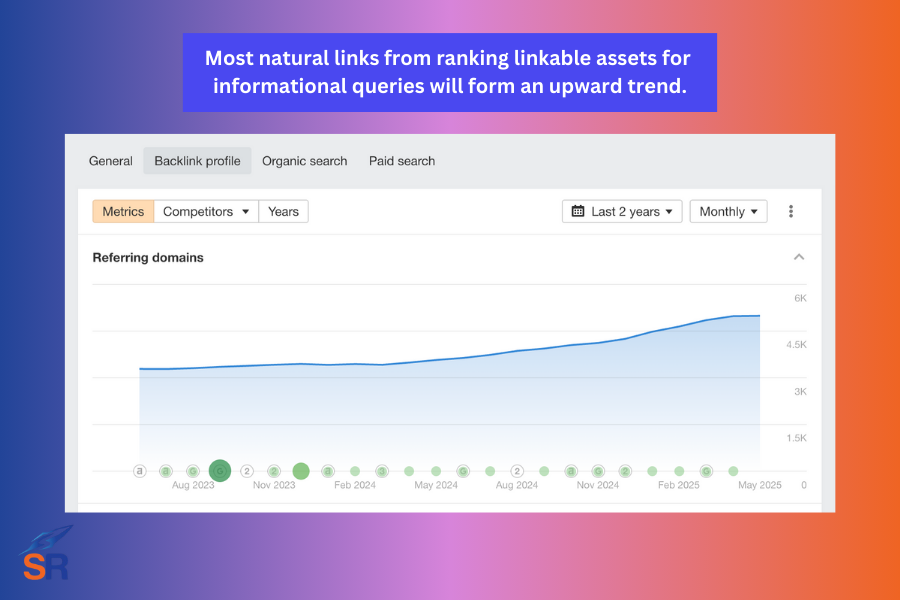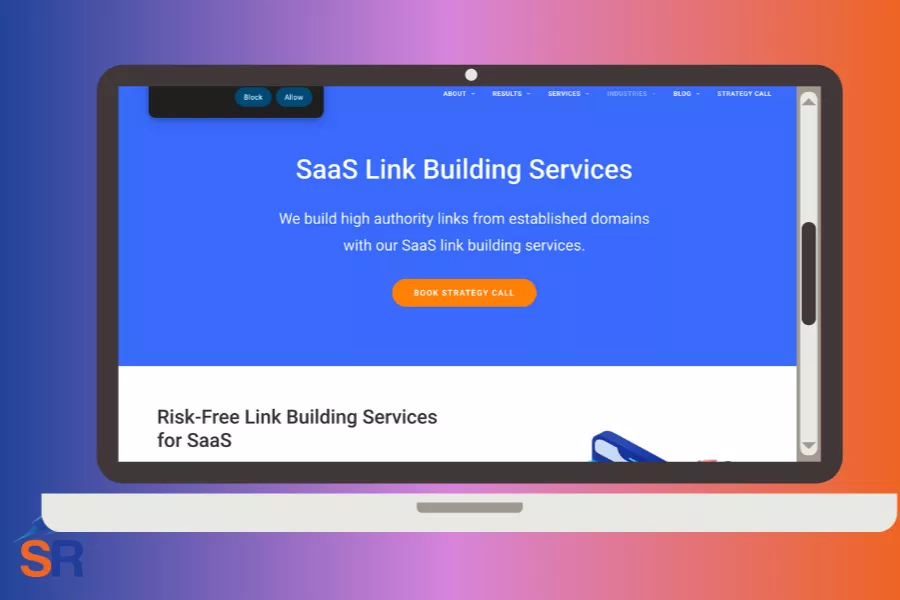In 2025, you’ll see the savviest SEOs moving into eCommerce, where there is less competition and higher returns. Those particular about handling affiliate and display-ad sites now diversify their efforts into eCommerce, as it offers better opportunities.
On top of this scenario, the demand for SEOs will significantly increase, given that traditional businesses continuously shift and/or add operations to their online shops.
Marketers who take advantage of this profiting market should master the basics and learn new ones to excel and dominate the competition.
The fundamentals of SEO have remained the same for years (and will continue to be so for years to come): sound technical SEO, logic-based site architecture, data-driven UX, and strategic backlink placements.
The latter – links matter more today. With AI content flooding search, links become a fundamental and most reliable signal of quality and authority, especially in eCommerce, where tons of business owners churn out AI content in their product descriptions and blog content, hoping for a sudden spike in organic traffic – which in reality, only stagnate their growth.
In this guide, I’ll show you how to build strong, relevant, and high-performing backlinks to your eCommerce that have only proven to work. Some of these are scalable and can even be tested in various industries and/or types of businesses (other than eCommerce).
Let’s get started.
Contents
ToggleBacklink Factors to Consider in eCommerce Link Building
Before diving straight into prospecting and outreach campaigns, here are the high-level considerations for starting any eCommerce link building campaign.
1. Relevance
Google values backlinks from domains that share topical relevance with your site. For instance, an eCommerce store selling outdoor gear should get backlinks from sites or blogs focused on outdoor activities, gear reviews, or travel.
Topical relevance extends even to the page’s specific content—we call this “page-to-page relevance”. So, in our earlier example, getting links from a page discussing hiking gear is significantly more valuable than getting links from a general lifestyle blog (if all things are equal, of course).
2. Trust and Authority
You want to get a link from a site that Google and users trust and consider authoritative. Link metrics, such as Majestic’s Trust Flow and Ahrefs’ Domain Rating and Page Rating, can measure this.
Majestics, for example, handpicked seed sites and manually reviewed them to ensure they were legitimately reputable. This is a starting point for assessing a link’s trustworthiness. Fundamentally, these sites only link to truly deserving pages, making it hard for anyone to manipulate the ratings for this metric.
So, acquiring from a link on a site that’s being linked to by any of the seed sites of Majestic tends to have higher Trust Foow, which is genuinely worth your time if you’re pursuing links.
On another note, you can use Ahref’s Domain Rating, which measures a domain from a scale of 1 to 100 based on the quality and number of unique referring domains the site acquires in a given time.
One tip is to assess whether the page you’re getting links to receives internal links from other pages within the website. A well-linked page boosts the value and authority of your backlink.
3. Anchor Texts
Anchor text influences how search engines interpret the relevance of your backlinks. Overdoing it on one end (let’s say getting 100% exact match anchor texts on links could lead you to some penalties) or being too conservative (just having 5% exact match) boils down to your risk tolerance.
I recommend getting an idea of what your competitors are currently doing regarding their link profiles. Analyze your competitors’ anchor text profiles to understand the ideal distribution.
For instance, in our link building agency, a healthy mix for our clients’ link profiles looks like 50% branded, 15% exact match, and 35% partial match. We optimize our strategy based on what we’ve seen on their competitors’ link profiles – not fully imitating as some of our competitors could be doing something wrong – the earlier mix is one to consider in our experience.
So, diversifying anchor texts goes like this:
- Exact match: Your target keyword (e.g., “best electric violin”)
- Partial match: A variation of your target keyword (e.g., “top-rated electric violin for beginners”)
- Branded match: Your brand name (e.g., “FiddlerShop”)
Topping it all, you want to also pay attention to words before and after the anchor texts used for links to maintain a natural context. This is where you see the sentiment types and language, whether or not it is going in your favor (if it’s giving a positive sentiment about your brand).
Overall, focus on creating a balanced and natural-looking profile, using exact match anchors sparingly.
4. Link Placements
The placement of a backlink significantly impacts its value.
Links positioned higher on the page hold greater weight than links in the footer or sidebar. So, for example, a link in the first paragraph of a blog post receives more engagement and link value than one buried at the bottom.
If a page has several external links, aim to get the first link rather than the third or fourth external links.
Context matters as well. A link surrounded by relevant and high-quality content holds more weight than a standalone link on a low-value page (brings back to the relevance factor mentioned earlier).
Aim for link placements that naturally integrate with the surrounding text. If you’re doing niche edits, ensure the surrounding texts fit and support the anchor texts.
5. Link Diversity
Diversity reduces the risk of overreliance on a single link type and signals to search engines that your site naturally acquires links from different sources. For instance, digital PR creates a robust and trustworthy backlink profile through a mix of editorial links from blogs, citations from relevant local directories, and mentions in top-tier publications.
Remember that a diversified profile is less susceptible to algorithm updates and helps avoid risks from over-relying on a single link building strategy (often abused as more marketers utilize it).
Getting a no-follow link is also valuable. It helps diversify your link profile and is even more beneficial if it comes from a high-tier website.
Which Pages to Build Links To?
One key area of link building strategy is prioritizing which pages of your eCommerce site to build links to.
Start by analyzing your competitors’ existing allocations to see what they’re doing and what Google has been rewarding them with lately in terms of rankings.
See how many links are pointed to the homepage, category (collection) pages, and some key product pages. This would give you insights on how many links you should target for each page in context with your website.
Another approach is to create your own link allocation strategy based on your current domain authority.
For instance, if your website is relatively new (say <DR25), you can point more links to the homepage (50%) and half of the links to blog content (50%). You want to pass more link equity to your homepage to build up its domain authority.
You can push more links to your category pages if you have a mid-tier authority site (DR25 to DR50). A good allocation would be 30% homepage, 50% collection pages, and 20% blog content.
You can allocate more to your key product pages for a high-tier eCommerce site with DR50 or higher. An ideal ratio would be 30% homepage, 30% collection pages, and 40% blog content.
Two things you’ll notice in this strategy:
- Diversifying links to transactional and informational pages (blog content) to create a more natural link profile – instead of merely focusing on money pages.
- Few to zero links point to product pages, as Google became more biased towards ranking product listings instead of a single product page.
11 eCommerce Link Building Tactics
Link building strategies for eCommerce in 2025 tend to target multiple objectives, including increasing brand and product awareness, improving Google’s SERPs (improving SEO), and enhancing brand positioning.
Here are some tactics you can try.
1. Partner Outreach
Leverage your existing network to build links. It is easier to persuade someone who trusts or is already familiar with your brand’s work.
Request backlinks from current partners from suppliers, distributors, or business partners. For instance, if your eCommerce site sells artisanal coffee, you could ask your bean supplier to include a link to your store in their “Partners” or “Retailers” section.
Attend local business events to connect with potential linking partners. Networking with industry stakeholders at trade shows or conferences takes a more extended shot at acquiring new customers or suppliers and expanding your lists of relationships with those who could potentially link to your eCommerce site.
2. “Where to Buy” Pages
One effective product-led link building strategy is acquiring links from “Where to buy” pages. It leverages the brand or product to attract and/or earn links. It also showcases the product’s unique value proposition to position it as an obvious solution in the space.
If you’re a distributor or retailer, find manufacturers’ sites with where to buy pages and get included in their list pages. You can use advanced search operators to find these pages quickly. Few link prospecting phrases you can try:
- site:DomainName “where to buy”
- site:DomainName “store locator”
- site:DomainName “find a store”
- site:DomainName “retailers”
- site:DomainName “buy now”
- site:DomainName “purchase online”
- site:DomainName “shop online”
- site:DomainName “available at”
- site:DomainName “stockists”
- site:DomainName “authorized dealers”
- site:DomainName “find us”
- site:DomainName “distributors”
- site:DomainName “where available”
Highlight your product’s POV and reliability as a supplier to increase the chances for inclusion.
You can also reverse engineer competitors to find sites linking to them from where to buy pages. We use tools like Ahrefs to find these opportunities.
3. Digital PR (Expert Commentaries, Data-Driven, Reactive PR, and Product Updates)
Getting links from high-tier publications (ones with DR70 or DR90) contributes to building a strong reputation for your brand, as your product or any part of your brand becomes more visible to potential customers.
Using digital PR as a forefront eCommerce link building strategy makes that goal reasonable and has been true to many successful link building campaigns for the past few years (you’ll find many SEO agencies integrating digital PR in their marketing services).
Expert Commentaries
Position yourself or your brand as an industry thought leader by giving expert commentaries to journalists of top-tier publications. Many need expert opinions to solidify their current research and add more meat to their content.
One effective approach to leverage expert commentaries in digital PR is to ask your client (or any thought leader in your organization) for expert tips on a given topic in your industry.
You can also gather these expert tips from recently published articles in their blog section, which are still helpful today (“evergreen”).
Curate these expert tips and craft a press release pitch to journalists who cover the topic.
Pro Tip: Identify angles of expert commentaries by using this advanced search query on Google search (“expert reveals” “topic” ) to help you generate digital PR ideas.
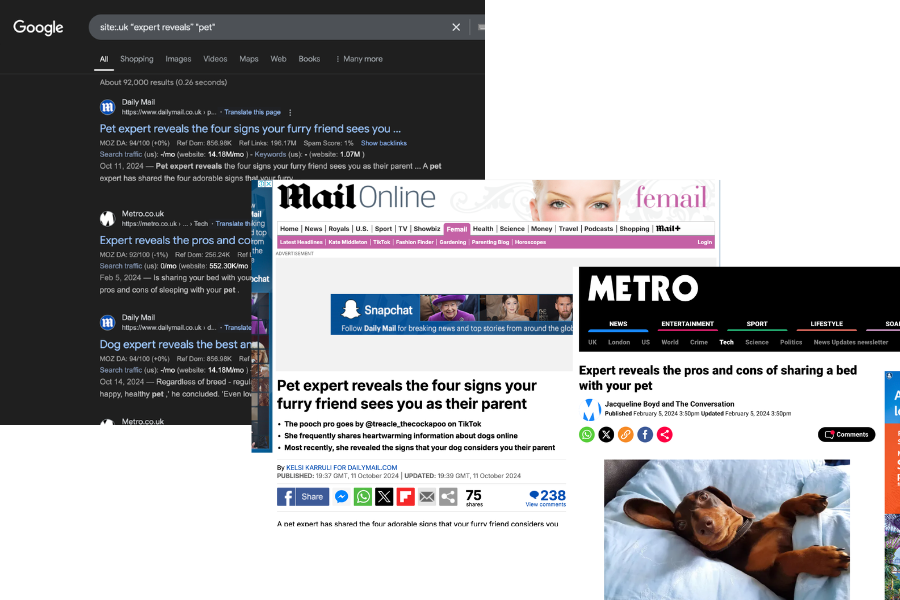
For client coverage in the UK, I use the search query “expert reveals” “topic” site:.uk” (seeing that there are several digital PR-led links from UK-based publications) – it’s a good source of insights for angles on expert commentaries.
Let’s say you sell premium beds, here are a few examples of expert commentary ideas you can create content on:
- A bedroom expert has warned against using washing-up liquid on windows:
- Expert’s ‘eye-rolling’ technique to get back to sleep if you wake up at 3am:
- Bed expert says this is how you stay warm ‘without spending any money’
Another popular approach to acquiring more links through expert commentaries is capitalizing requests for expert inputs on social media.
Start by looking for PR-related posts on X with hashtags like #journorequest or #prrequest. These are posts from journalists actively looking for expert comments – and having you jump into the conversation by directly sending email pitches is an actual leverage you can take.
You can also subscribe to platforms like Featured and Daily Press Roundup at PressFlow to receive notifications from publishers when expert commentary requests are made.
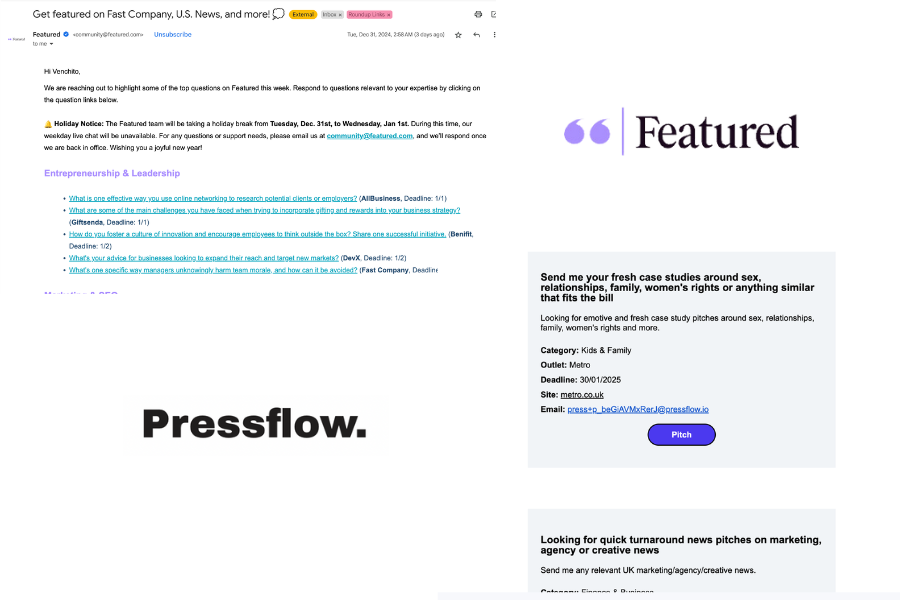
To increase your chances of being featured, ensure your responses are concise, professional, and tailored to the journalist’s query.
Data-Driven Campaigns
Conduct and present original research or gather your own data. These assets could be surveys, experiments, or analyses that offer fresh insights into a topic.
If you don’t have the capacity to collect your own data, you can source information from public databases. Then, find unique angles that you can use for your own content.
One way to spark digital PR ideas for datasets is by using Google’s search query: “study reveals” “topic” sites:.co.uk” – replace it with other TLDs (aside from .uk) if you’re in the US or Australia.
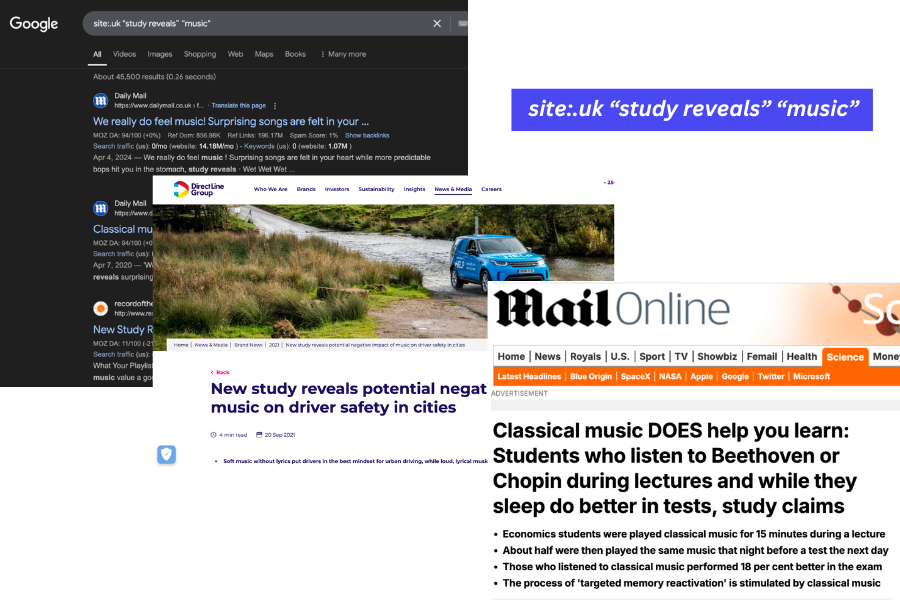
Then, filter the search results from last year to the current year (if the current year is 2025, filter results from 2024 to 2025).
You don’t have to reinvent the wheel. Since they published a similar dataset last year, they’re likely to be receptive to new, unique insights/angles on the given topic—this time, with a new dataset.
Reactive PR
Reactive PR leverages trending topics and breaking news to gain quick exposure and backlinks.
By identifying current trends, you can leverage the existing desire for journalists to cover the story, making it easy to get coverage for your input.
Monitor current events and spot viral topics using tools like Google Trends and Twitter Trends.
For instance, if there’s a sudden spike in demand for eco-friendly products, and you sell sustainable packaging, you can create content or offer expert insights on the subject.
Time-sensitive pitches are more likely to gain traction, so being one of the first to create content that resonates with a relevant trend increases chances for coverage (and more links due to the campaign).
Product Updates
Generate links from coverage of your new product updates, by sharing the behind-the-scene stories, founders’ commentary, or any interesting information about your new product (or its new product update) that would interest journalists and publishers.
For more best practices, you can check out this guide for more digital PR tips.
4. Member Discounts
Offer exclusive discounts to linkable audiences (e.g., teachers, military personnel, nurses, first responders, etc..) by creating a dedicated landing page for each discount type.
Highlight how the discount aligns with their readers’ interests to make the audience group feel personally catered to.
Make a list of websites with roundups or list pages for discounts. Start your search by finding pages linking to your competitors, using Ahrefs or other link intelligence tools.
Reach out and pitch your product for inclusion.
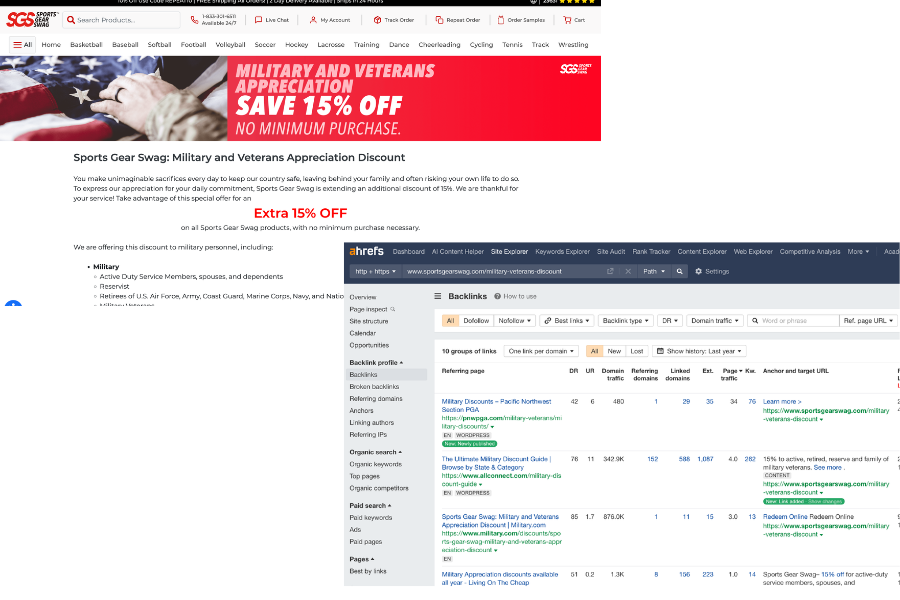
With a highly personalized email outreach, you’ll likely get a 5 to 15% conversion rate in your outreach emails using this eCommerce link building strategy.
5. Affiliate Programs
Another eCommerce link building tactic that leverages deals and offers is affiliate programs. This strategy acquires links and offers a way to expand your brand’s network by adding a distribution channel for your products or services (affiliate network).
Launch, publish, and design an affiliate program page with the best-converting copy. Treat it like a linkable asset to attract publishers to link to your page.
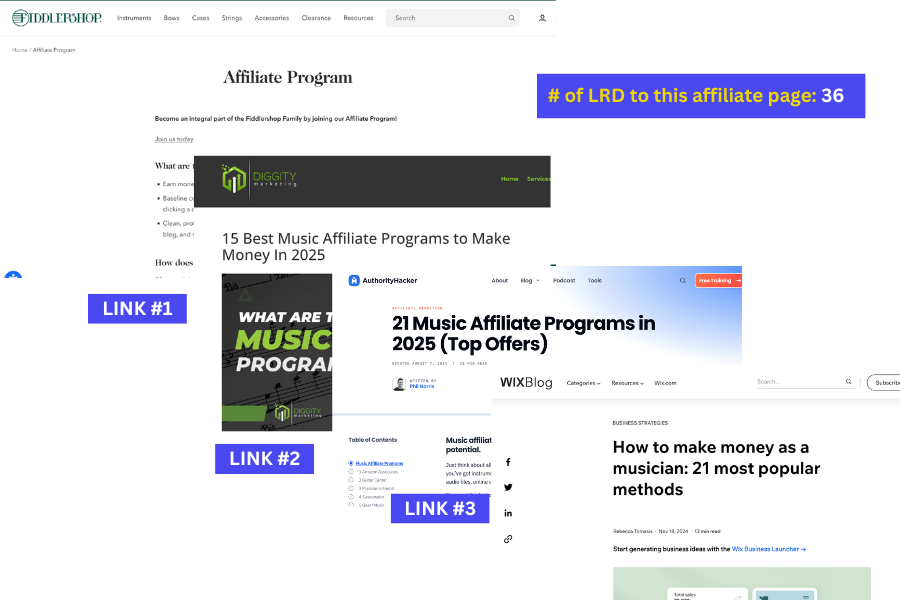
Get included on affiliate roundup posts, such as “top affiliate programs in [niche]”.
While most of the links from this technique come from the online marketing and finance verticals, the link value from high-DR sites is still worth pursuing.
Monitor mentions of your affiliate program using Ahrefs’ Alerts or BrandMentions. Ask these site owners to credit mentions with links.
6. Content Partnerships
Compared to new content (i.e. guest posts), existing pages with significant organic traffic (currently ranking for informational keywords) are pages worth pursuing for backlinks.
This is especially true if you’re targeting the types of backlinks that drive business value to your pages in terms of lead generation and branding. Links from these pages can drive second-hand traffic to your eCommerce.
Content partnerships, also known as niche edits and link insertions, comprise the majority of eCommerce sites’ link profiles today.
The ease, relevance, and value of niche edits play a significant role in driving quick wins to product category pages (many eCommerce SEOs find this type of page challenging to build links to).
The approach in prospecting for niche edit opportunities is almost similar when you prospect for guest post blogs (the only difference is you add published articles when doing link prospecting).
The advanced search operator (site:DomainName.com “topic”) is used to find topically relevant blog posts. Filter the search results by two years from the current year (2023 to 2025, if the current year is 2025) to sort search results with recently updated, published pages.
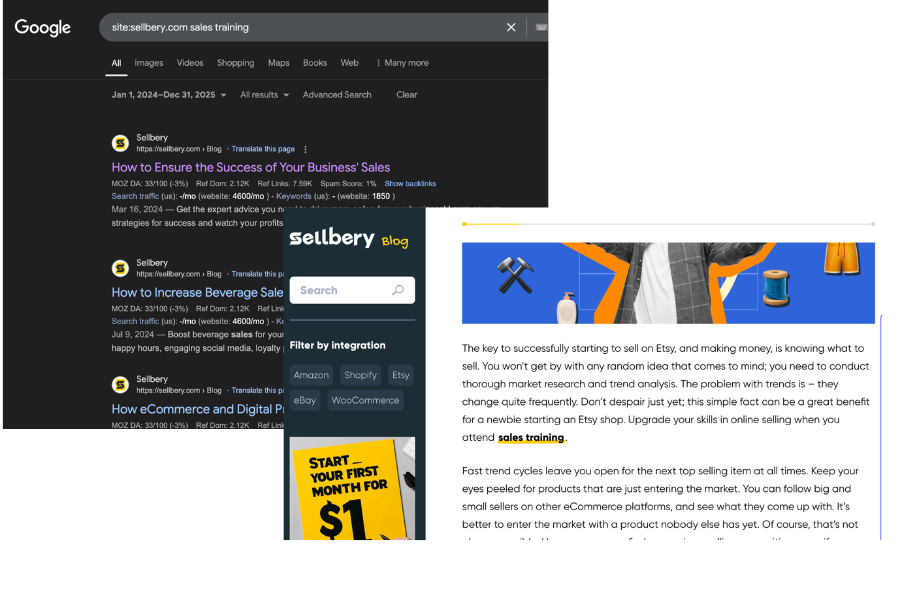
Send outreach emails to publishers of these pages asking for niche edits. You can incentivize them by offering free products or reciprocating the link by linking to the best content from your blog (or other articles from your other websites).
7. Product Reviews
Getting product reviews is still viable if the reviews are legitimate and honest.
Focus on getting bloggers and influencers with an engaged audience (not necessarily massive, but targeted toward the potential customers you’re looking into).
Send your products and clearly state that you want an honest review without any obligation to provide a positive outcome—this works better than forcing them to write biased and fabricated reviews.
I recommend asking for links to point to the product category page (where the specific product is located) or to the homepage (if it’s more properly context) – using branded anchor texts.
8. Reverse Engineer Competitors’ Links
Developing link building strategies in 2025 boils down to understanding what the top players do – replicating tactics but making it better for your site.
Analyze competitors’ backlinks using tools like Ahrefs. You can use Link Intersect to uncover high-potential pages linked to your competitors, but not to you.
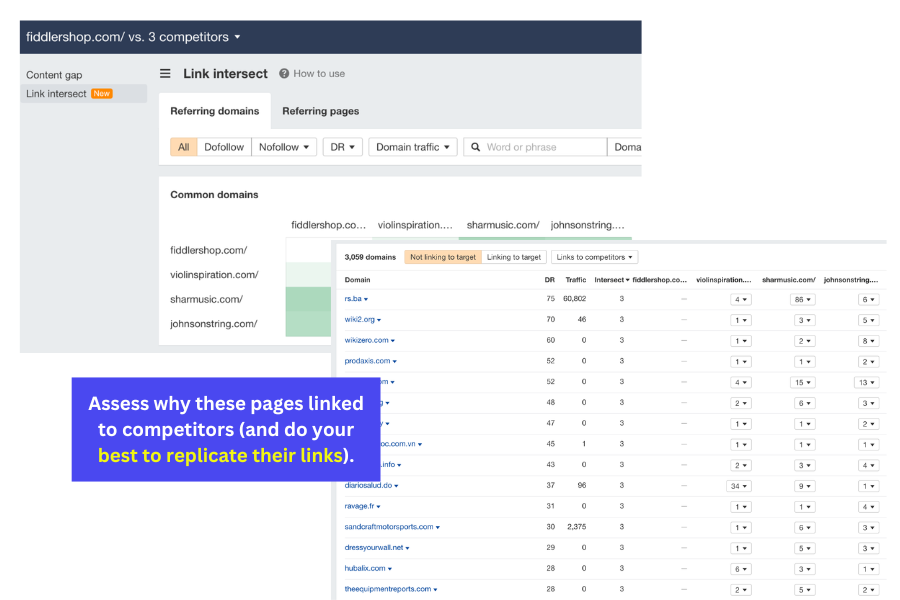
For instance, if you find several roundups or list pages that mention your competitors, contact them and ask for inclusion, emphasizing why your product/service deserves to be included.
You’ll get insights rarely seen in reverse engineering competitors’ link profiles. A few notable patterns you could find are:
- Specific link types that can easily scaled to target more link opportunities of the same kind (multiple links from a single link building strategy) – (e.g. associations, local sponsor pages. etc..).
- Anchor text ratio (as mentioned earlier) so you can figure out the best percentage for anchor texts.
- Linkable audiences that are likely to resonate more for links in your industry (i.e. parents, students, or veterans).
- Topical guides you can recreate (but doing it better and more comprehensive) – i.e. Guide to Buying a Violin.
Do this as part of your SEO tasks to generate new insights into link building and developing content assets with a high potential for earning links.
9. Publish Content-Led Assets
Many successful link-building campaigns we’ve executed for our clients in our link building agency (and even case studies we’ve seen in others’ SEO and digital marketing agencies) have produced content-led assets.
Create high-utility, value-driven content assets to better build and earn links through relationship-building and manual outreach approaches.
Start producing guides to appeal to a broader audience that promotes and supports links for their audiences.
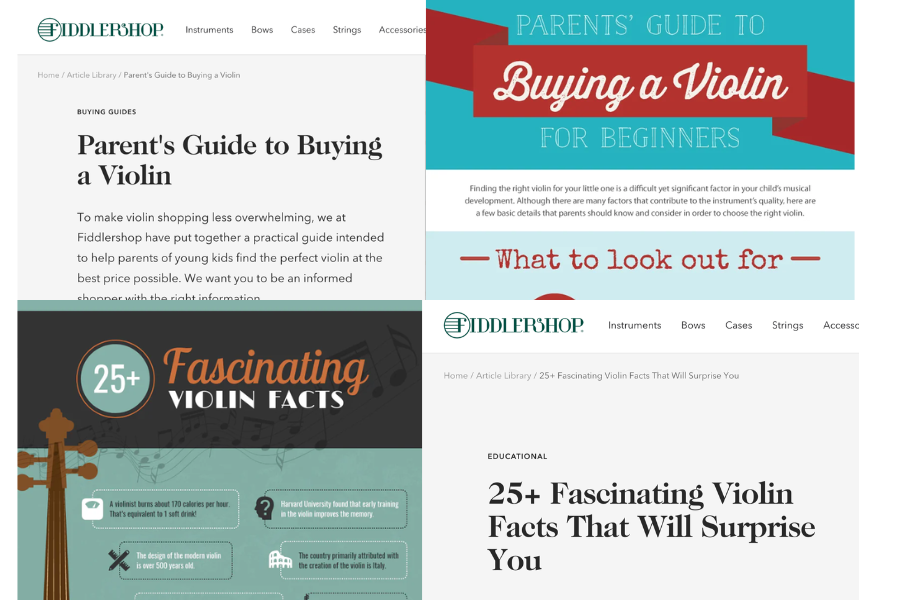
Publish content around audiences that fit your current niche/topic. Linkable audiences include:
- Teachers
- Caregivers
- Parents
- Senior citizens
- Veterans
- Health conditions sufferers
- Job seekers
- The unemployed
- Local community
- Students
- Families of substance abusers
Aligning content with each intended audience’s needs, interests, and challenges guarantees that links will be converted from each link building campaign.
10. Links from Comparative Pages (“Best of X”)
In addition to publishing high-utility, value-driven content assets for links, we have added product-led link building as part of our core link building services.
I’ve covered this entirely in my guide on product-led link building. The premise is simple: Leverage the unique aspects of our client’s product or service to attract and earn links.
We highlight the product’s unique proposition to position it as the best possible solution for the challenges, needs, and problems it addresses in the market.
Start by finding “best of X” articles and roundups for the product or service using Google search (with advanced search operator inurl:best “product category”)
You can use Ahrefs to find more “best of” pages linked to your competitors.
Reach out to the authors/editors of these articles and ask for inclusion. Offer insights into why your product stands out in terms of quality, value, or innovation.
For example, this comparative content highlights our client as a premier choice for advanced cellos.
11. Unlinked Brand Mentions
Tracking unlinked mentions of your brand is a 2013-ish link-building strategy. Still, it is considered highly effective in generating product-led links in 2025, especially for reputable eCommerce brands with extensive product coverage.
Given that more publishers are producing content that highlights other people’s products in their roundups and different types of content, it is more common to see articles mentioning the brand (but without links).
Track unlinked mentions of your brand, product, and names of thought leaders in your organization. We use tools like Ahrefs’ Alerts, Mention, or Google Alerts to get notified of those brand mentions.
Send pitches to authors of those articles and request that they convert the mention into a clickable link.
Need help with link building? Get your free strategy call. Let’s talk.
If you liked this post, you can follow me on X @venchito14.
Written By
Venchito Tampon
CEO and Co-Founder at SharpRocket, a link building agency. With a decade of experience, Venchito has a proven track record of leading hundreds of successful SEO (link builidng) campaigns across competitive industries like finance, B2B, legal, and SaaS. His expert advice as a link building expert has been featured in renowned publications such as Semrush, Ahrefs, Huffington Post and Forbes. He is also an international SEO spoken and has delivered talks in SEO Zraz, Asia Pacific Affiliate Summit in Singapore, and Search Marketing Summit in Sydney, Australia. Check out his other business - Hills & Valleys Cafe.
Reviewed By

Sef Gojo Cruz
COO at SharpRocket, overseeing end-to-end operations, from crafting link building strategies to leading high-performing teams. Previously led SEO initiatives at Workhouse, a digital agency in Australia, and Keymedia, a real estate media company based in New Zealand.
How our LINK BUILDING AGENCY in UK builds 250 links/mo consistently using Predictable Link Building Methodology™…
- Using a SIMPLE and PROVEN system
- Using a SCALABLE strategy
- No private blog networks
- No creepy outreach emails
